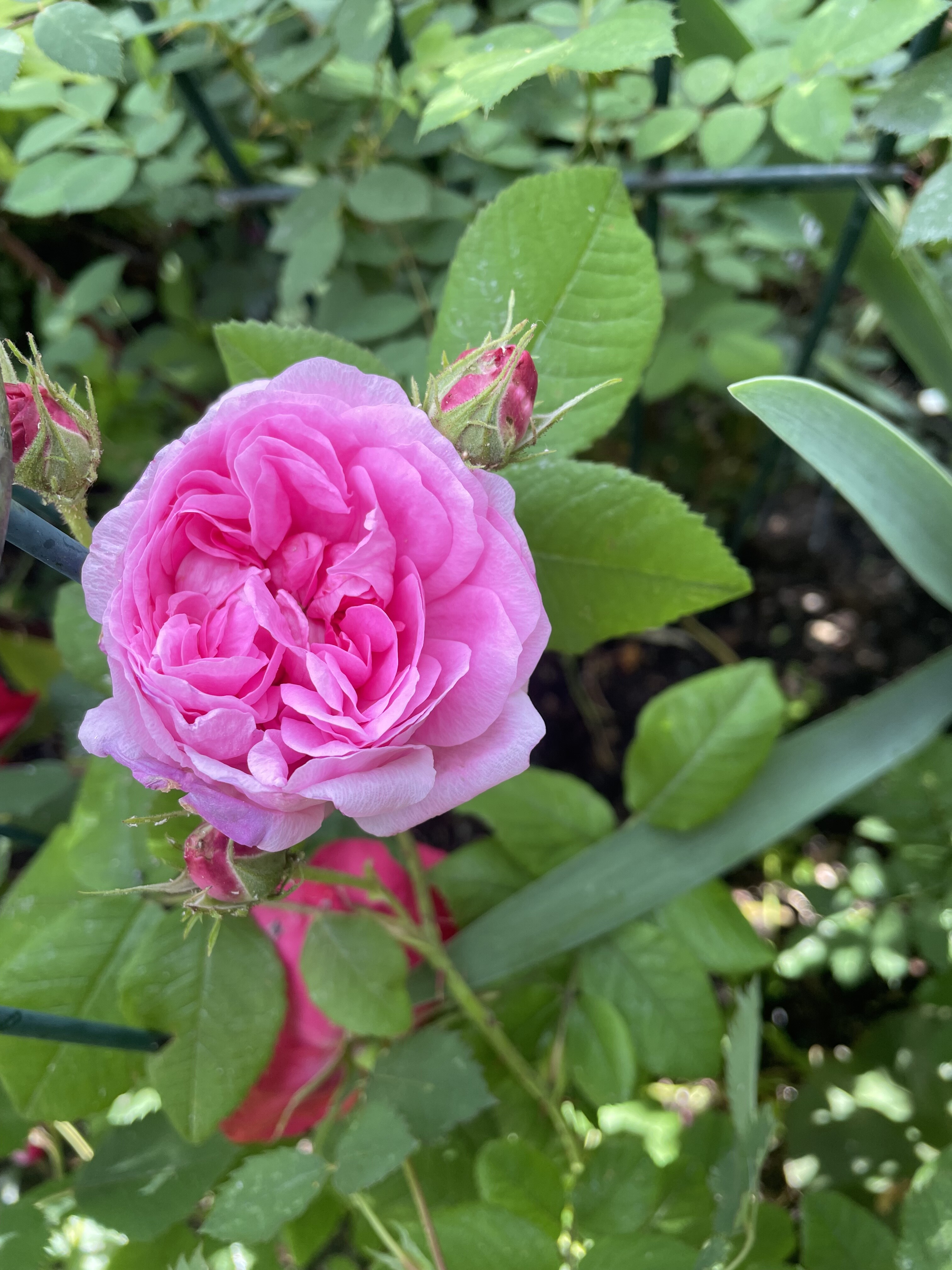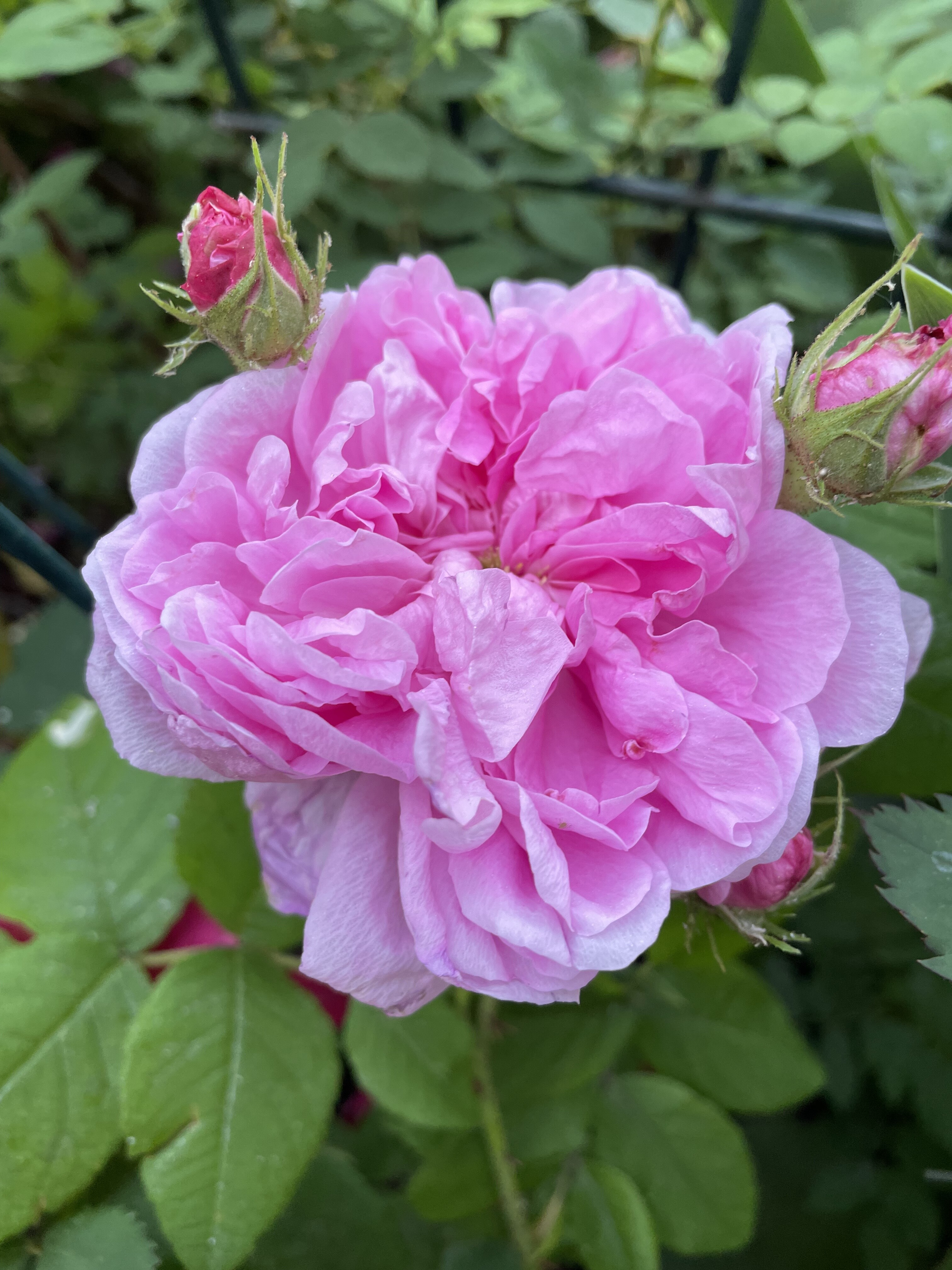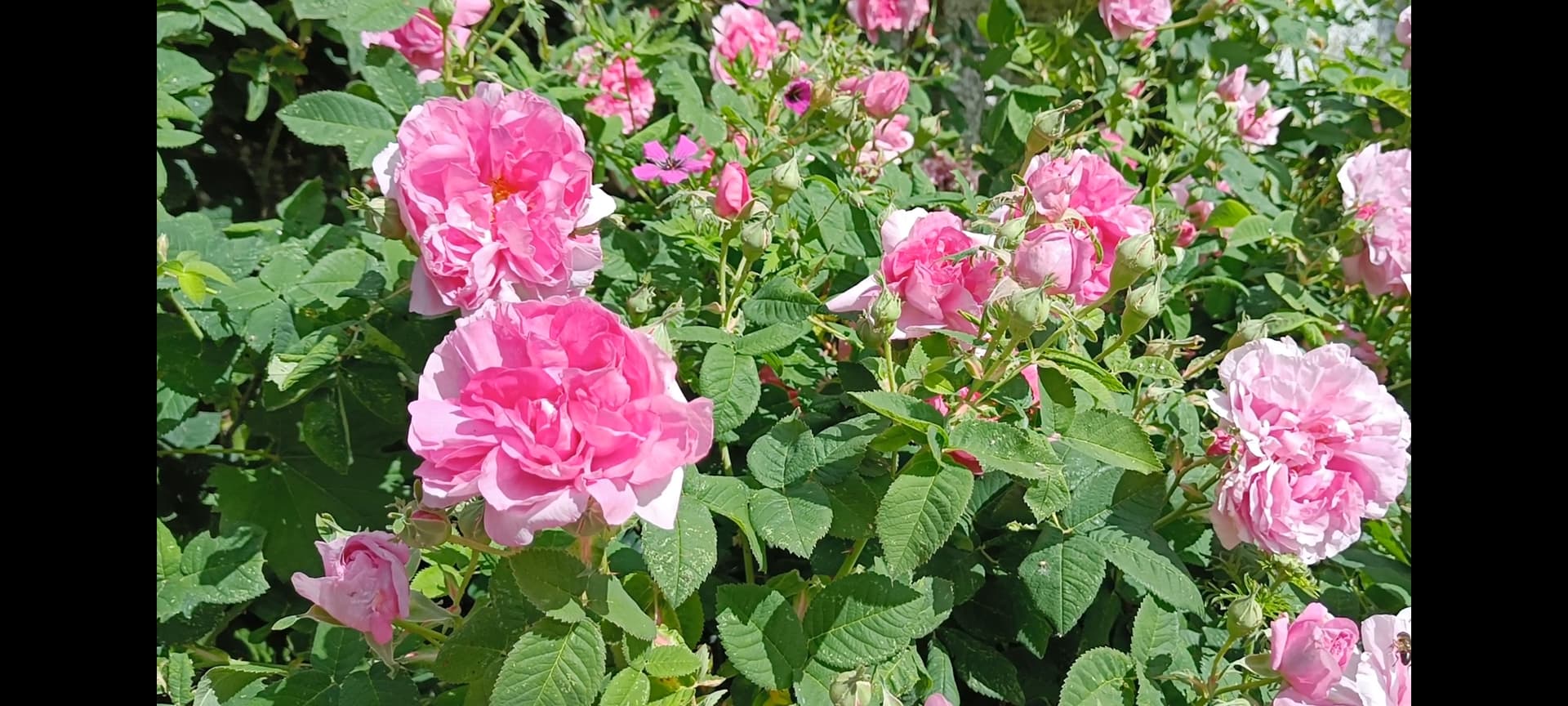Historical “Euro-Cdn” rose’s first bloom in my garden from a small runner planted un 2021. Why care?
Opening performance of bloom form is aesthetically pleasing to my eye. No fragrance detected.
A plant growing in Canadian bald prairie shows winter resilience - see HMF winter damage photo. Another reason l care.
Tends in photos to develop “flattish muddled” older bloom … or better, blousy, classic, non-ridged, Victorian elegance. Or a Toulouse-Lautrec-Monfa moulan rouge poster painting.
Origins and type debates can end up quite passionate. Generally accepted likely arrived from Eastern Canada and before from Europe. Normal pioneer transport story.
If a Damask derivative, l am pleased as none l have tried have survive winter to consistently bloom in my garden.
Breeding potential automatic first question for me … not found any examples but other than hybrizing pioneers doubt anybody tried to capture any attributes. May not bode well if the giant 5 did not release an effort.
Nice if longer time in garden trial it gives fragrance. Actually not a trial, never leaving as has the history of right rose, right place, like Dr Merkeley … at thats just from just popping one bloom. Now the long wait for Mossman.



